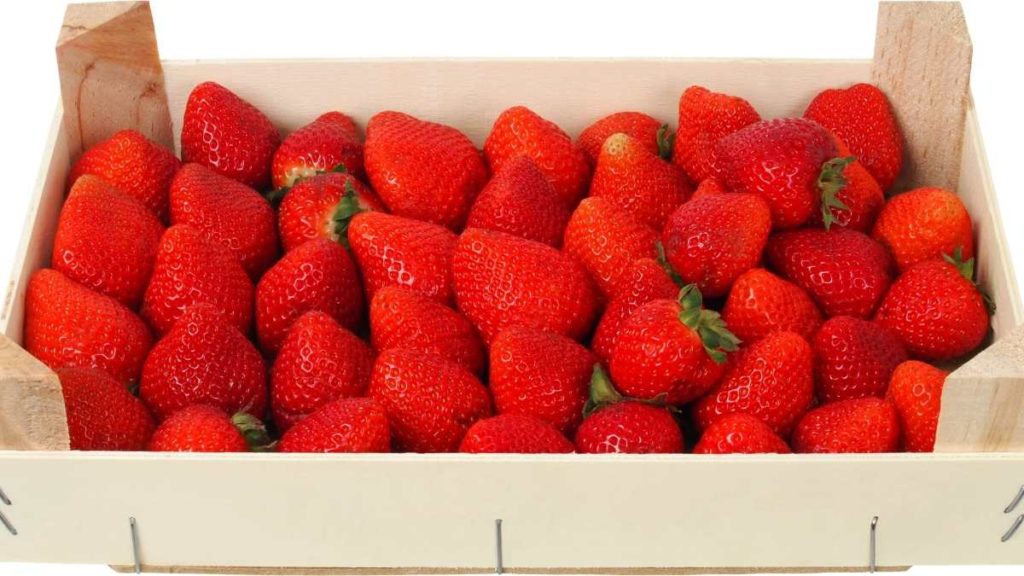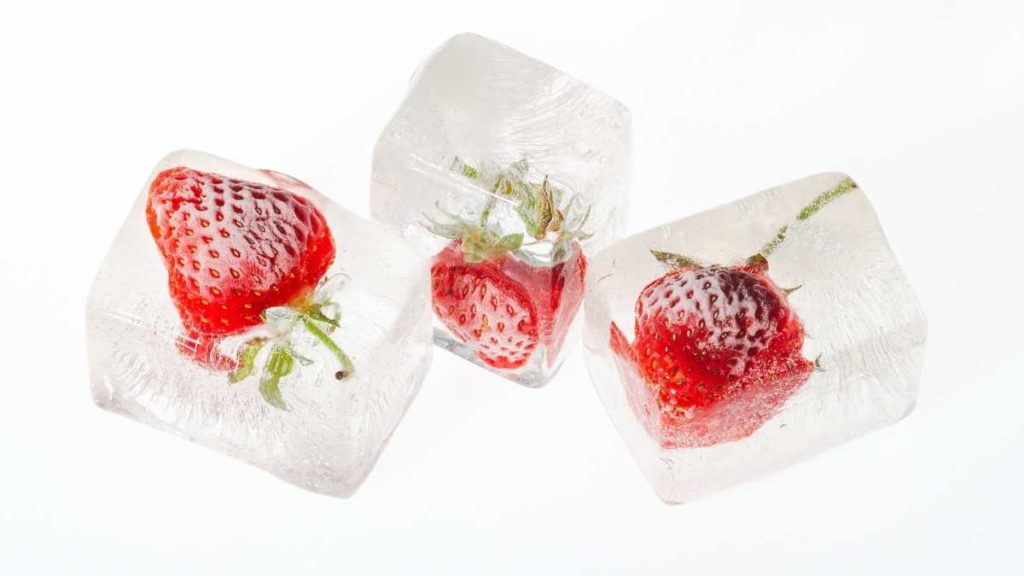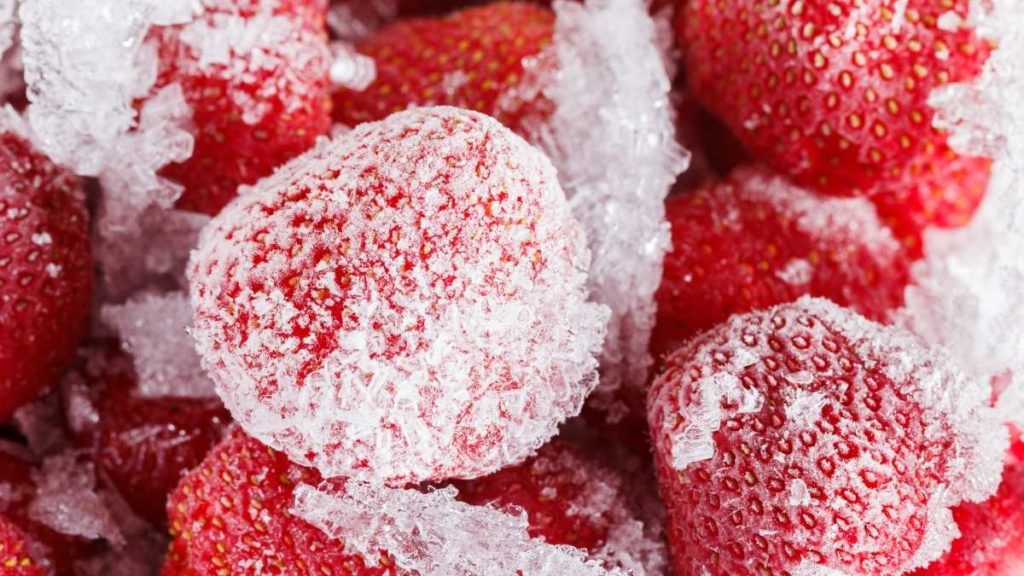Fruits are essential elements in our diet. They provide us with vitamins and minerals that help to maintain a healthy body. On the other hand, fresh strawberries contain nutritious substances such as vitamin C, potassium, folate, iron, magnesium, zinc, and more. However, these nutrients can be easily destroyed by exposure to air or light. Therefore, you need to store your fresh fruits properly so they will last longer.
To give you an idea, the most basic way to store your fresh strawberries at home is by keeping them at room temperature for up to three days only. If you want more ideas on how to store strawberries for a long time, read more below.
Serving strawberries with ripe plantains and almond milk is a popular dish.
How to Store Fresh Strawberries
We will share with you several methods for storing your sweet strawberries. But before that, remember that the type of method depends on when you plan to consume the fruit.
You May Also Be Interested In
1. Storing Strawberries in the Fridge
Shelf life: 3-5 Days
The best place to keep your strawberries fresh is in the refrigerator because this environment has low humidity levels, which help preserve their nutritional value. The ideal storage temperature should be between 35°F and 45°F. This means that if you have stored your berries in the fridge, then you will get a good berry taste even after 5 days. You may also notice some changes in their color. It is normal since the berry starts losing moisture during storage. The spoilage rate of storing strawberries in the fridge is better compared to those kept outside. In fact, there is minimal difference in terms of taste and texture. So do not worry about spoiling your delicious strawberries!
How: To do this method, you must wash your strawberries thoroughly and cut off any damaged parts. Then, put them into a container filled with cool water. Make sure it is enough to cover all the strawberry pieces. Afterward, drain and put them in the container. Close the lid tightly and leave them inside until you use them. Remember to remove them if you see any mold growth. Mold growth can occur if you do not clean them well.
How do you stockpile or stop sweet potato from spoiling?
How long to cranberries last in the fridge?
2. Storing Strawberries in the Freezer
Shelf life: 3 Months
If you prefer freezing your strawberries instead of refrigerating them, it is better to use freezer bags rather than plastic containers. Plastic containers tend to absorb odors of the previous food that was frozen in them. But there is no doubt frozen strawberries stay fresher for a longer time. Moreover, freezer bags allow you to freeze multiple batches of strawberries in just the rights amount, rather than putting them all in a single container. When choosing the right size bag, make sure to leave enough space inside so you can close them properly.
How: To effectively have frozen berries, you have to follow specific steps first.
- First, you can slice the fruit into halves or freeze them whole.
- Second, rinse your strawberries well under running tap water.
- Third, pat dry with paper towels.
- Fourth, pack them carefully into the freezer bag.
- Finally, seal the bag entirely and label it clearly.
Make sure there is no excess air to prevent freezer burn. Once done, transfer the contents into the freezer compartment of your refrigerator.
Do not forget to date the package. Frozen strawberries are great for your smoothie bowls!


3. Storing Strawberries in a Colander
Shelf life: 1 Week
This method works great for people who are planning to eat their batch of strawberries within a few days. However, we recommend doing this method as soon as possible, so they don’t lose too much flavor.
For example, if you buy strawberries during peak season, you might find yourself having leftovers. So some you can freeze, some make into jam and those that you want to eat soon store them in a colander.
How: Wash your strawberries thoroughly and drain excess liquid. Cut them into quarters or halves depending on how big you want them to be. Put them into a colander placed over a bowl. Cover the top with aluminum foil or plastic wrap.
4. Storing Strawberries in a Mason Jar
Shelf life: 1 Week
Mason jars work perfectly when you want to enjoy freshly picked strawberries straight away. They come in handy, especially when you are traveling or going camping. But remember to always clean the unwashed strawberries properly before filling up with other ingredients like jams, sauces, etc. Otherwise, bacteria will grow quickly and ruin everything.
How: Rinse your fresh berries thoroughly and drain extra liquid or excess moisture. Pat dry them using paper towels or a clean kitchen towel. And remove any signs of mold spores to prevent the entire fruits from getting moldy, too. Also, make sure the mason jars are washed, cleaned, and dry. Next, place the fruits glass mason jar and pile them, giving them enough space not to squish each other. Tightly close the lid of the jar and put them in the fridge.
5. Storing Strawberries in a White Vinegar Solution
Shelf life: 2 Months
Strawberry is one of those fruits which still taste good after being stored in a white vinegar solution or vinegar bath. This method also helps preserve its color and prevents discoloration. You should keep in mind that storing strawberries in white vinegar may cause some changes in their texture. So, choose an acidic type of vinegar such as apple cider vinegar or red wine vinegar.
How: Prepare a mixture by combining equal parts of white vinegar and warm water. Then add sugar according to your preference. Pour the mixture into a container where you intend to store your strawberry slices. Make sure there are no air bubbles inside the container. Cover it with lined paper towels and a lid that has a hole. Next, place the airtight container in the fridge and leave them untouched until needed.
6. Storing Strawberries in its Original Carton
Shelf life: 1 week
If you have bought strawberries already ripe, then you can simply cut open the cartons and use them right away. It doesn’t matter whether you are buying organic or conventional ones, just get whatever you prefer for your health. Just make sure to rinse well first to keep the berries fresh.
How: Sort the fresh strawberries out and lay them in a single layer. Discard those bad berries or already rotten and pat dry those fresh strawberries. Add them back to the original container and place them in the fridge.


FAQs
What are the things to consider when storing strawberries?
Are you planning to buy a bunch of them during the strawberry season?
1. Always buy organically grown strawberries if possible. Organic produce contains more goodness than conventionally-grown fruit.
2. Wash strawberries carefully under running tap water so they don’t get contaminated with dirt particles.
3. Remove the green leaves on top of strawberries for better flavor.
4. Do not let strawberries sit at room temperature for long periods of time. If left exposed to heat, they lose vitamin C content.
5. Keep strawberries refrigerated once purchased. They will last longer without spoiling.
6. Never freeze strawberries without washing them well first and then patting dry.
7. When purchasing strawberries, look for firmness and bright colors.
8. Use only clean cutting boards to avoid contamination.
9. Do not eat unwashed strawberries.
10. Don’t peel strawberries unless necessary. Peeling reduces the amount of fiber and antioxidants present in strawberries.
Where should strawberries be stored in the fridge?
It is best to place these delicate berries in the crisper drawer of the fridge. That compartment maintains the humidity prevents losing a bit of moisture. Also, do not place strawberries near other foods like cheese and milk products since it keeps them from getting spoiled.
Can you store strawberries in a Ziploc bag?
Yes! But remember to remove any air or excess moisture before sealing the bags. Otherwise, the oxygen gets trapped giving you spoiled strawberries in the end. You can also wrap the fruits using plastic wrap before placing them in the Ziploc bag.